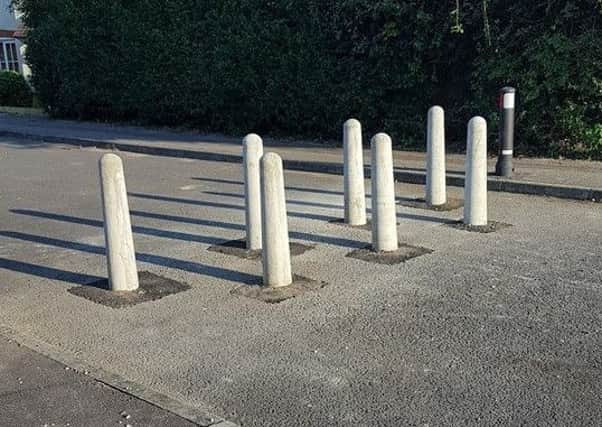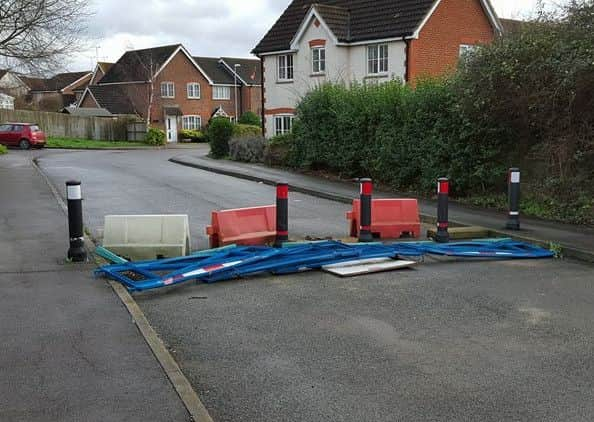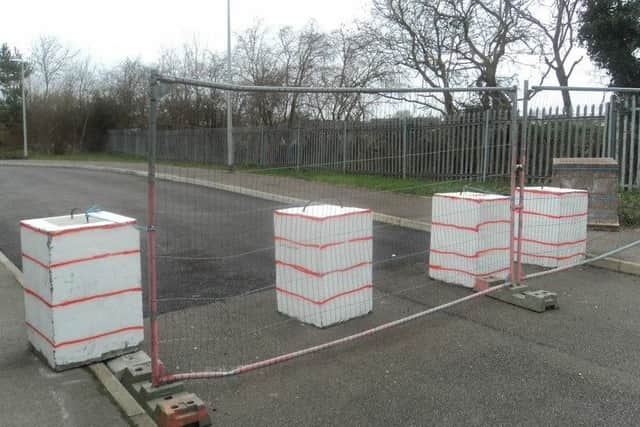No barrier to solving Leighton's '˜Great Wall' mystery


The barriers, located on a throughroad between Garland Way, Billington Park, and Kingfisher Drive, Sandhills, were installed this autumn to replace a set of plastic bollards put in place by Central Beds Council.
But residents were unclear as to why the bollards, nicknamed ‘The Great Wall of Billington’ by the Southern Estates (Leighton Buzzard) Residents’ Group, were replaced and why the barrier had been erected in the first place.
Advertisement
Hide AdAdvertisement
Hide AdSome residents even claimed that the land should not have been built on because it was ‘sacred’, while others remembered concrete blocks constructed prior to the bollards.


Colin Johnson, Billington Park resident and neighbourhood chaplain, Hockliffe Street Baptist Church, said: “My family moved into Billington Park around 2001, and I remember Sandhills was built around 2006.
“There was talk of a bus service running through the two areas but there were complaints that the throughroad was becoming a rat run, as cars were mounting the pavement when driving down it!
“The early barrier way was concrete blocks, and about two years ago they put up a plastic barrier and bollards.”
Advertisement
Hide AdAdvertisement
Hide AdHowever, after doing some research, the LBO can reveal just why the blocks and bollards were erected.


A spokesperson for Central Beds Council said: “The developers Persimmon and Taylor Wimpey constructed Kingfisher Drive and connected the kerbs and carriageway up to Garland Way.
“They placed concrete filled oil drums as a temporary measure across the carriageway in an attempt to stop vehicles gaining access between both estates until the freehold of the land had been fully negotiated between the Defence Estates and Central Bedfordshire Council as the highway authority. The council then installed the bollards across the carriageway as a more permanent measure.
“The concrete bollards are a permanent install to replace the Glasdon jubilee bollards (plastic barrier) that kept getting removed by residents to use this section of road as a private link road.
Advertisement
Hide AdAdvertisement
Hide Ad“It was always the intention for a bus service to connect the two areas but when the bus operator serving Kingfisher Drive attempted a dummy run through the two estates, and it became clear that there was a considerable amount of on street parking that made it impossible for a bus service to operate effectively.


“The land was originally Green Belt but was reallocated as developable land for the 2004 Local Plan.”
A spokesperson for Taylor Wimpey said: “The blocks were initially put in place to stop access between Kingfisher Drive and Garland Way.
“Originally there was a proposal to take a bus route through this gap but there was a ransom strip in between which curtailed that idea. The ransom strip is, we believe, is still owned by the vendor, Arnold White. The blocks were to protect a ransom strip for land not controlled or owned by Taylor Wimpey.”